In 400 years, interior door designs in the U.S. have come a long way. Literally. From the European rustic doors of our earliest colonies to the distinct architectural styles we know today, our doors have evolved drastically thanks to a variety of influences as well as our own creativity and artistry. It’s a broad and detailed topic, so here’s a quick stroll through the highlights.

Pre-Colonial Interior Doors: Rustic
Our first interior (and exterior) doors were board-and-batten doors, a design with origins in Europe during the Middle Ages. Featuring horizontal wood battens reinforcing vertical wood planks placed closely together, these unframed doors sometimes included iron clavos or straps as construction aids or decorative embellishments. (Picture the door styles we know today as “rustic barn” or “Old World.”)
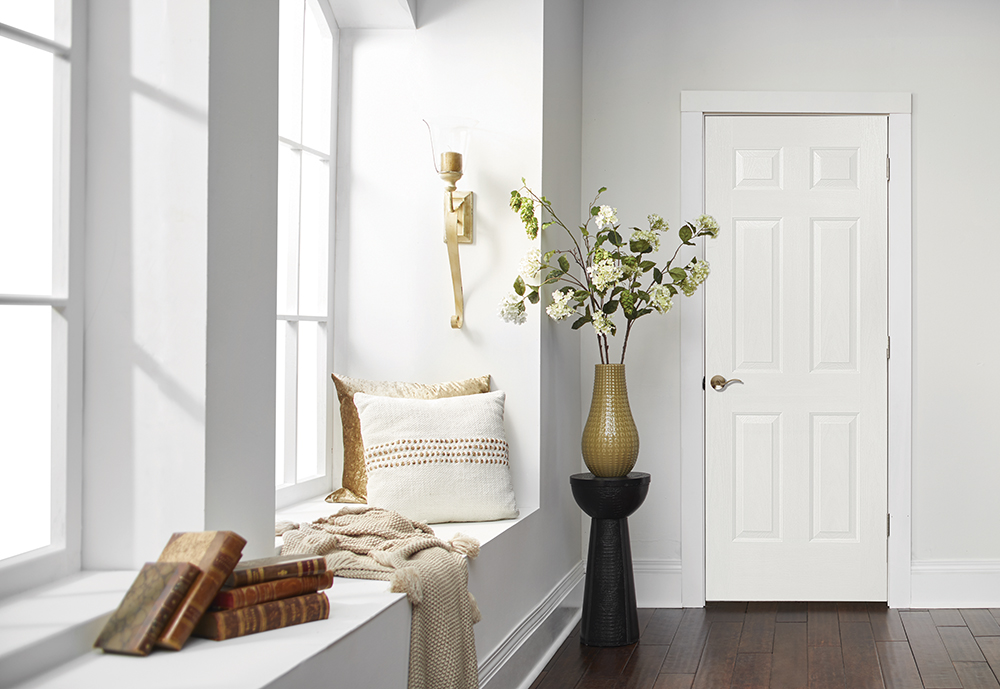
Colonial Interior Doors:
Stile & Rail with Raised Panels
Stile & rail doors came into more common use around 1700. They were constructed from vertical stiles and horizontal rails of wood designed to hold wood panels (at first flat, then raised) in place without the use of nails. This pieced-together construction produced a door more airtight than board-and-batten doors and allowed for swelling and contraction due to temperature and humidity changes without damage. Inspired by the British Georgian architectural style of the time, typical Colonial door designs featured two to eight panels in a symmetrical configuration; the six-panel design became so widely used, it’s still the one we commonly call “Colonial” today.

Federal Interior Doors:
Glass and Light
After the Revolutionary War, the Federal era infused Colonial-style design with a newly-minted American flavor. Exterior doors became more welcoming of natural light with the addition of sidelites and distinctive fan light transoms. On the interior, this evolved into the broader use of multi-lite French doors. More homes were being constructed two or more rooms “deep,” and French interior doors helped to maximize the light available from room to room. Six-panel “Colonial” style interior doors were also widely in use.
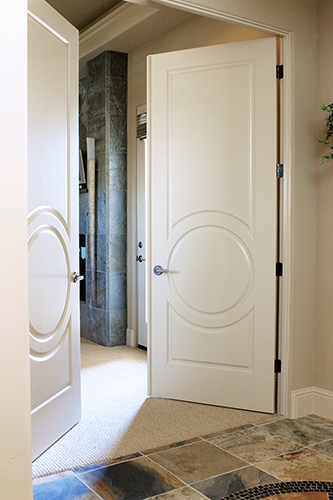
Victorian Interior Doors:
Ornament and Influence
The Victorian era (named for the reign of Queen Victoria over the United Kingdom, 1837-1901) was a time of optimism, abundance, and expressing one’s status. Home designs reflected this new confidence, with heavier wood (furniture and doors) with more elaborate framing, carved ornamental accents, richer, darker paint colors, and brass hardware. Exterior doors and sidelites sometimes showcased decoratively patterned glass.
Interior door designs went in a number of different directions during this time, reflecting the varying aesthetics of the Queen Anne, Gothic Revival, and Second Empire design periods. Typically, heavier wood doors reflected the same four-panel or five-panel layout, with a two-thirds over one-third proportion. The top two panels (square- or arch-topped) might be solid wood or feature frosted, etched, or patterned glass. However, when we think of Victorian era interior doors today, we likely imagine something closer to a Queen Anne style.

Shaker Interior Doors:
Stunning Simplicity
The Protestant sect commonly known as the Shakers fled religious persecution in England and became established in the U.S. in 1780. They brought with them a unique philosophy around interior design that, while in practice prior to the Victorian era, did not gain popularity until the 1860s: simple, unadorned building design and furniture styles created with devoted artisanship and the highest possible quality. Shaker interior doors feature straight lines, flat panels with no sticking, and beautiful symmetry. For a true Shaker look, choose a door with natural wood details (unstained and unpainted).

American Craftsman Interior Doors:
Artisan Quality
Both the British and American branches of the Arts and Crafts movement rejected the ornamental, designed-to-impress style of the Victorian era and mass-produced (read: low quality) housewares of the Industrial Age in favor of a philosophy similar to that of Shaker design: cleaner lines, straightforward design, and authentic craftsmanship. In the United States, this movement (roughly 1876-1920) included under its umbrella a variety of beloved home design styles, including Bungalow, Prairie, Mission, and American Craftsman. The “Craftsman door” design is still popular today — one of many great interior design elements from this time period.

Flush Interior Doors:
A New Kind of Construction
In the early 1900s, a new method of door construction was introduced: the flush door. Featuring a smooth, unadorned surface with the appearance of one continuous piece of wood, the first flush door was actually constructed from long, thin pieces of wood glued together and finished to blend cleanly. Today, “flush” is used to describe a door with a fully-flat surface, rather than the way it’s made. Flush doors are available in a variety of materials and can include glass inserts. Interior flush doors tend to be lightweight but durable; their smooth surface makes them easier to clean.
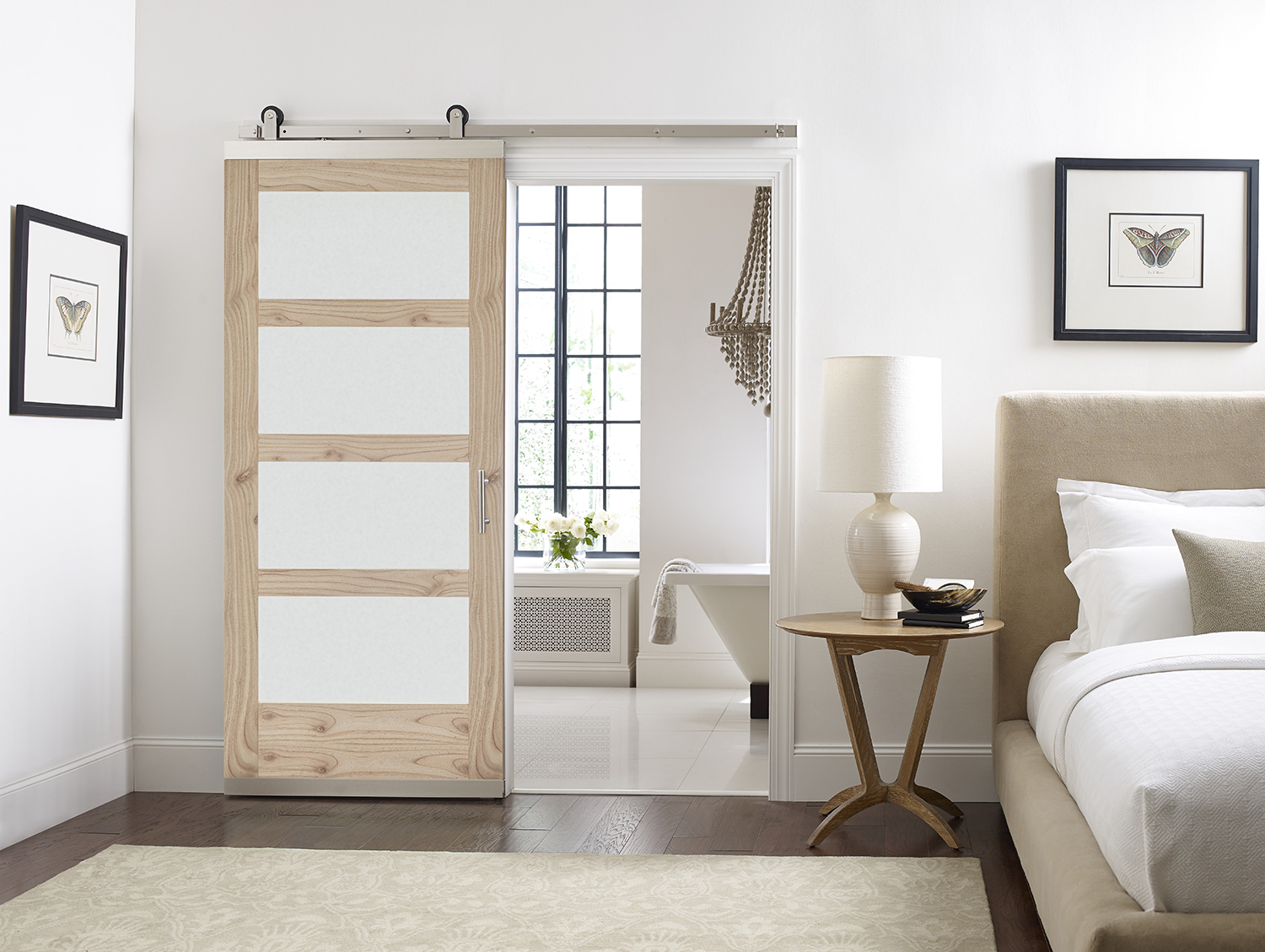
Modern Interior Doors:
Streamlined and Symmetrical
Rooted in that earlier shift away from heavy ornamentation to a more streamlined, simple look, modern design (beginning in the 1920s and peaking in the 1950s and 1960s) continued the evolution with open floor plans, larger windows for more natural light, and white and off-white spaces rather than dark woods. Nothing fussy here — modern is all about smooth surfaces and clean lines; geometric shapes and patterns that manage to be symmetrical even when they aren’t perfectly centered; and neutral shades punctuated by pops of strong, bright color.

Molded Interior Doors:
Ecofriendly and Stylish
Until the mid-1970s, mass production of most windows and doors required the milling of raw wood into components to be used for assembly. The milling process threw off a great deal of wood chips and sawdust, which could be used to fuel the boilers powering the milling plants themselves or sold to companies making paper, but very often was simply considered waste. JELD-WEN was one of the first companies to develop a new use for this waste material: creating molded door skins. By refining the chips and sawdust into fiber, adding materials for stability, and creating a fiber mat, the JELD-WEN team was able to press the mat into a specific door design that looked like a stile & rail door but had the durability and stability of one solid piece — and could be painted or stained, just like real wood.
Today, JELD-WEN offers the widest selection of molded wood composite interior doors available in the U.S. Attractive and affordable, these doors offer designs to suit home styles from traditional to Shaker-inspired to contemporary.

Contemporary Interior Doors:
The Unexpected
Contemporary style — and contemporary interior doors — emerged in the 1970s from such a wide range of design influences that it’s difficult to narrow down specific attributes. Door panels may be raised or flat, or surfaces may be flush. There may be ample glass or only accents; hardware may be sleek and slender or make a bold statement. It’s common to find both stained or painted wood doors and metallic, industrial-look doors. In short: Contemporary interior doors surprise. That also extends to their size and operation, which can include wider and/or taller doors, pivot hardware, pocketing styles, and more.
Discover even more JELD-WEN® interior door options here.
Looking for inspiration? Explore our interior doors project gallery.
Find the nearest JELD-WEN dealer or retail location here.

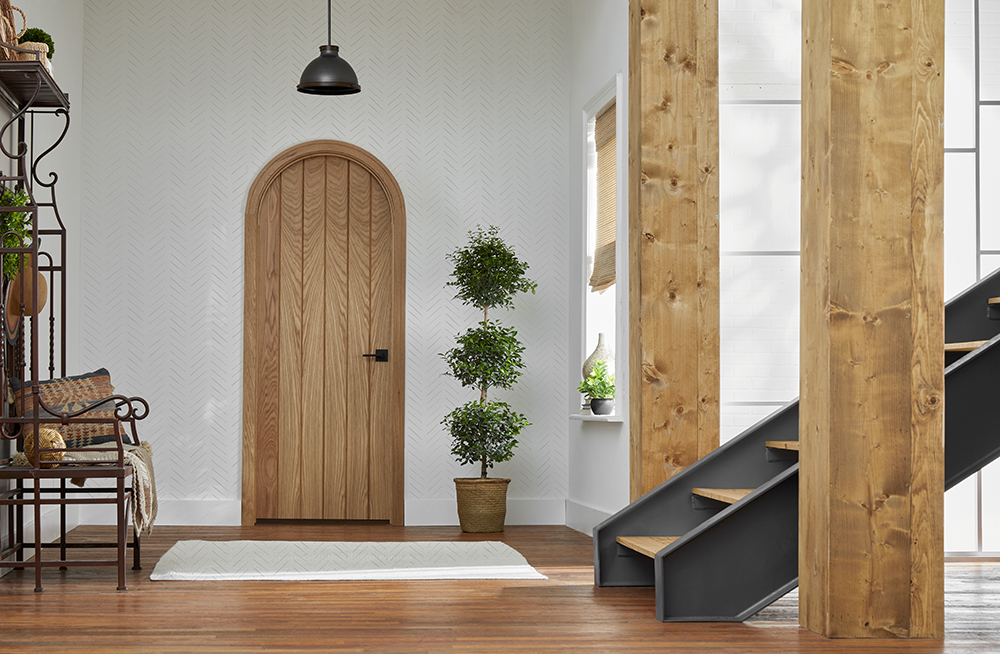
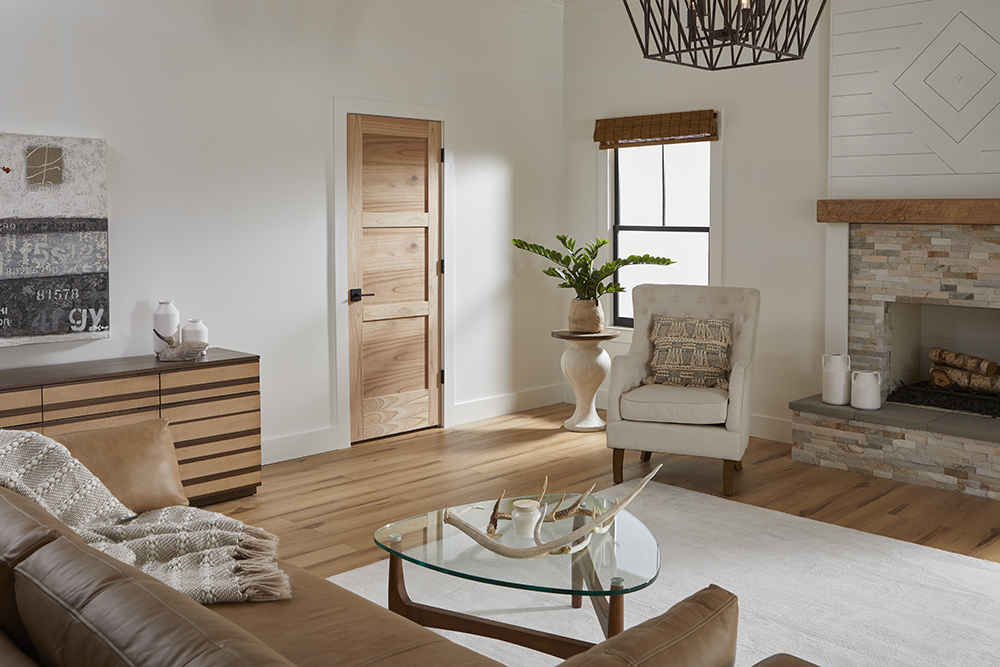
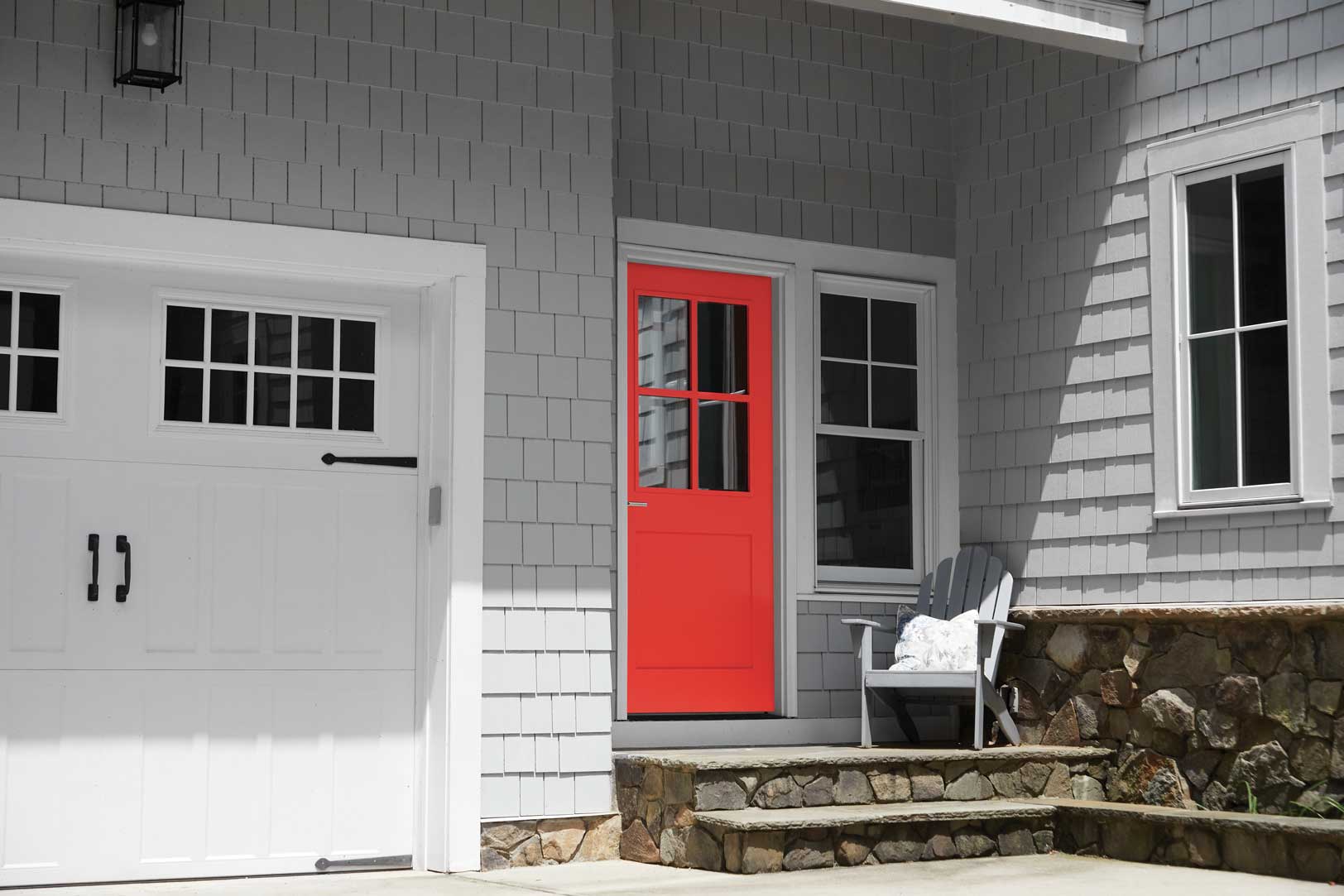
Comments are closed.